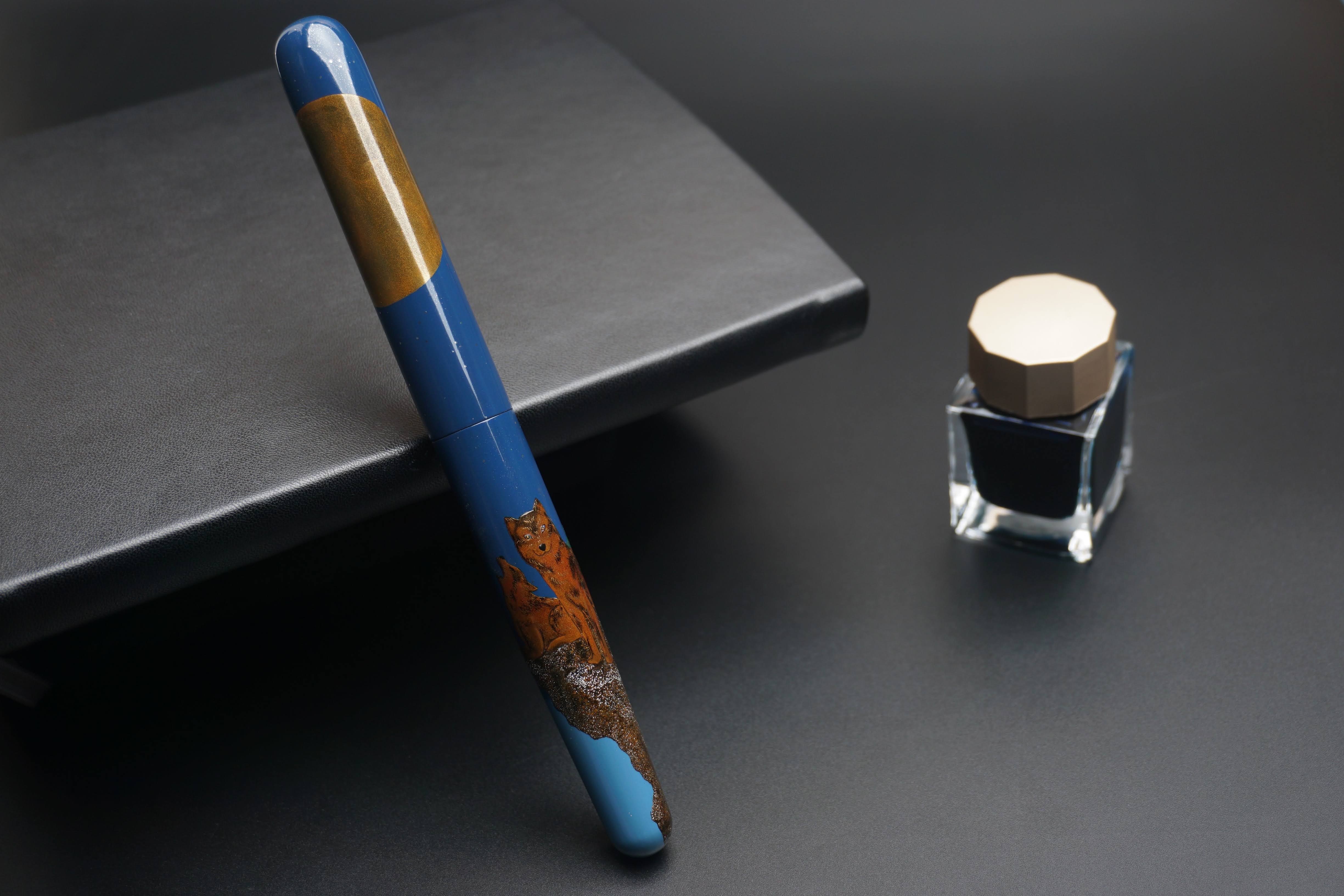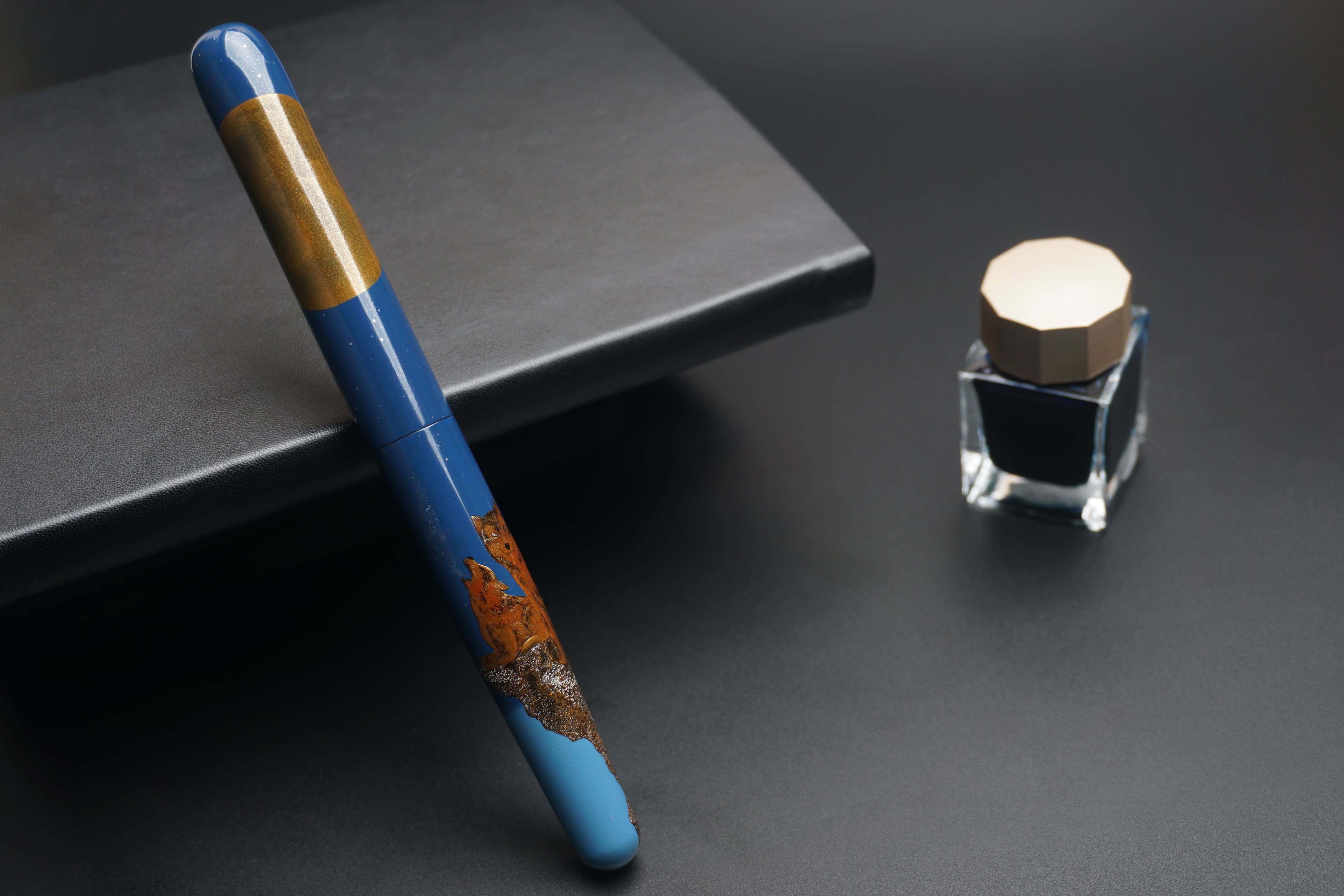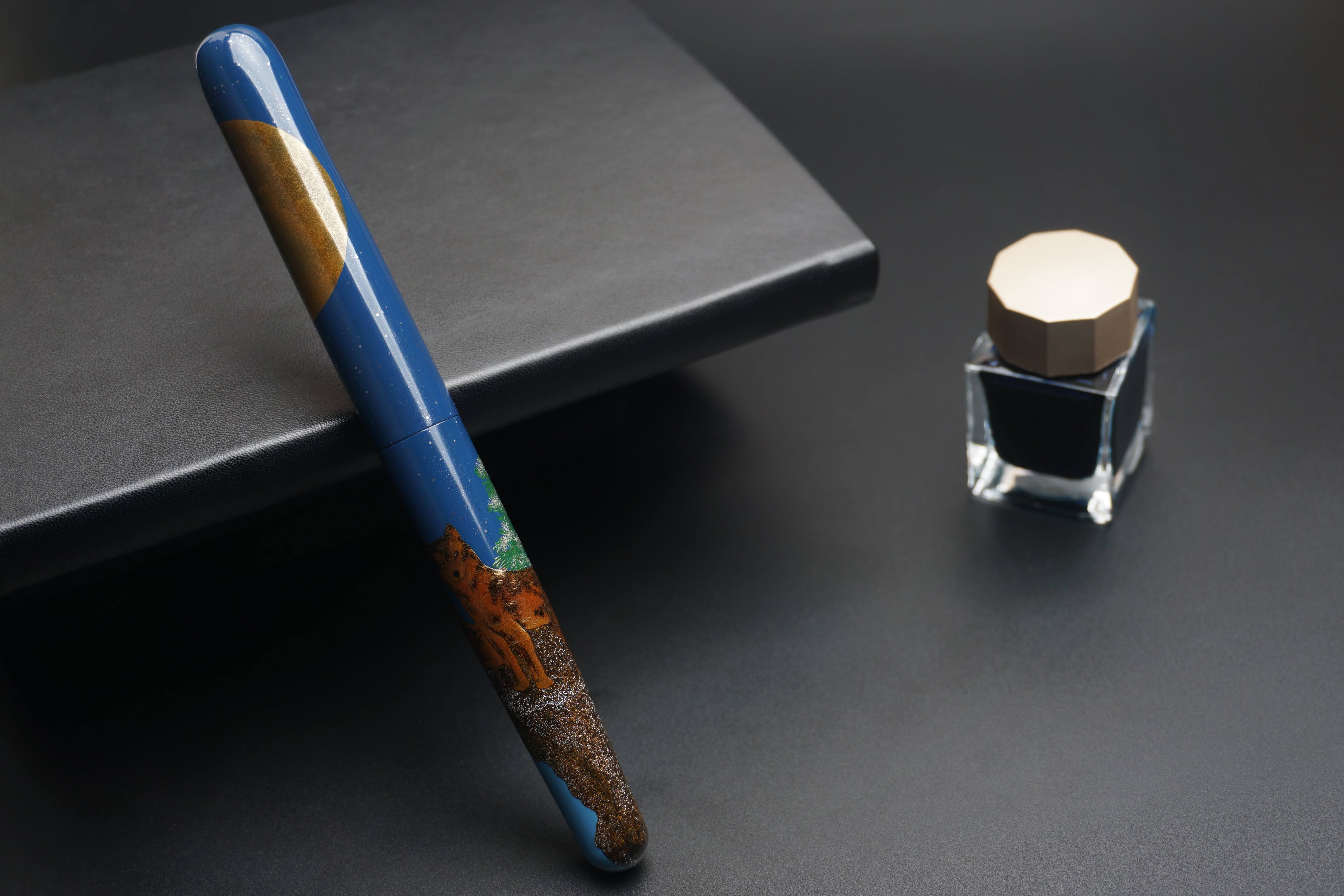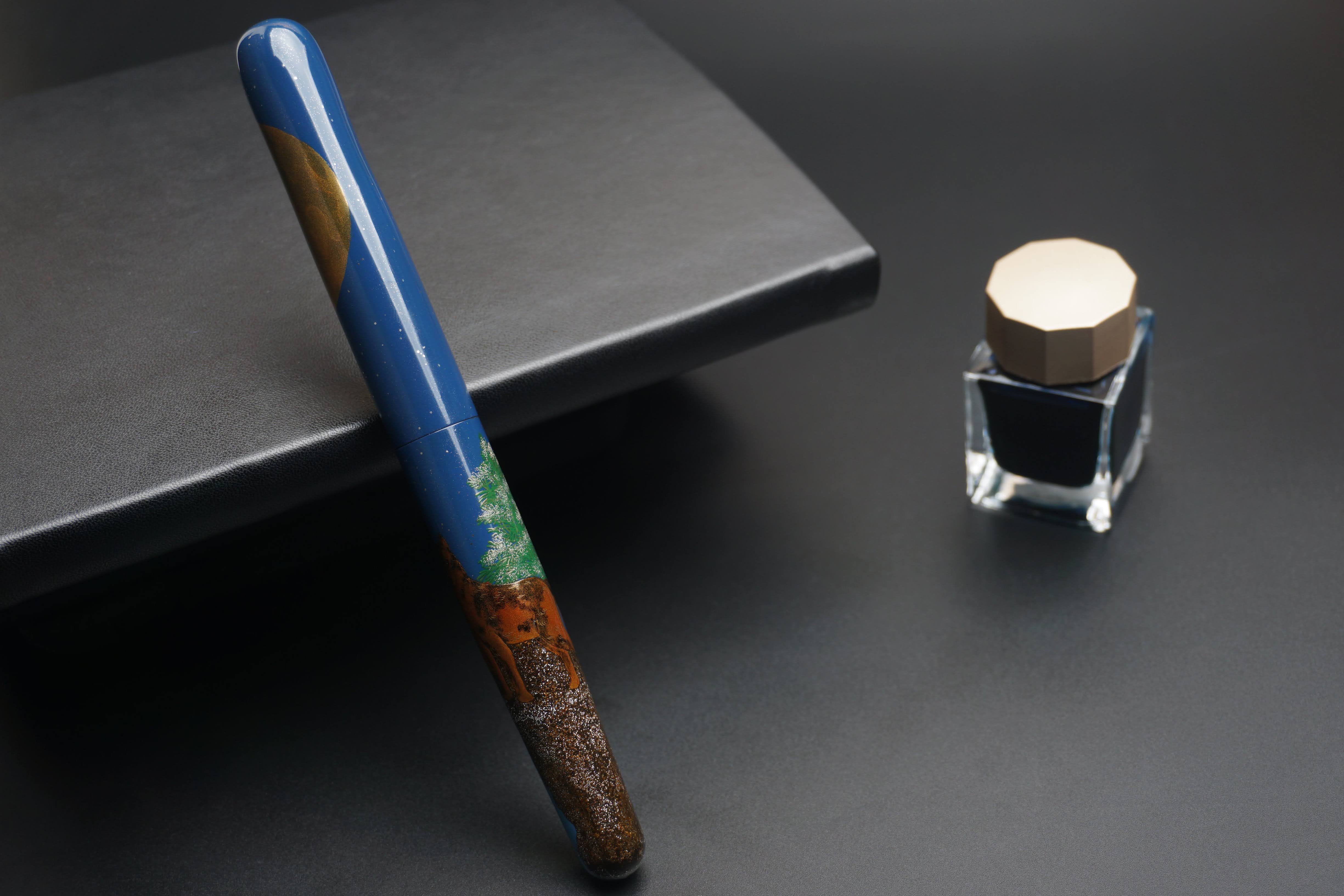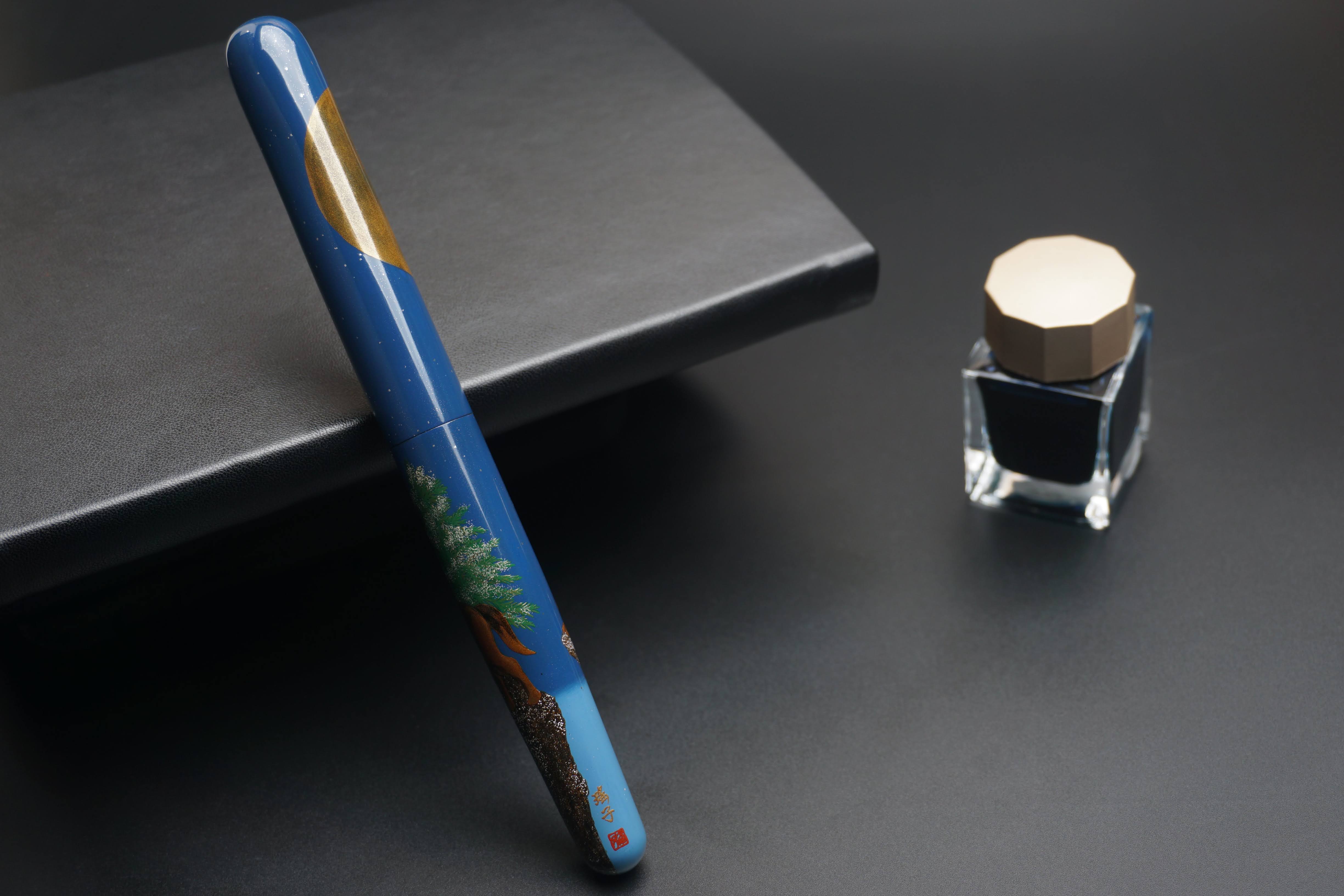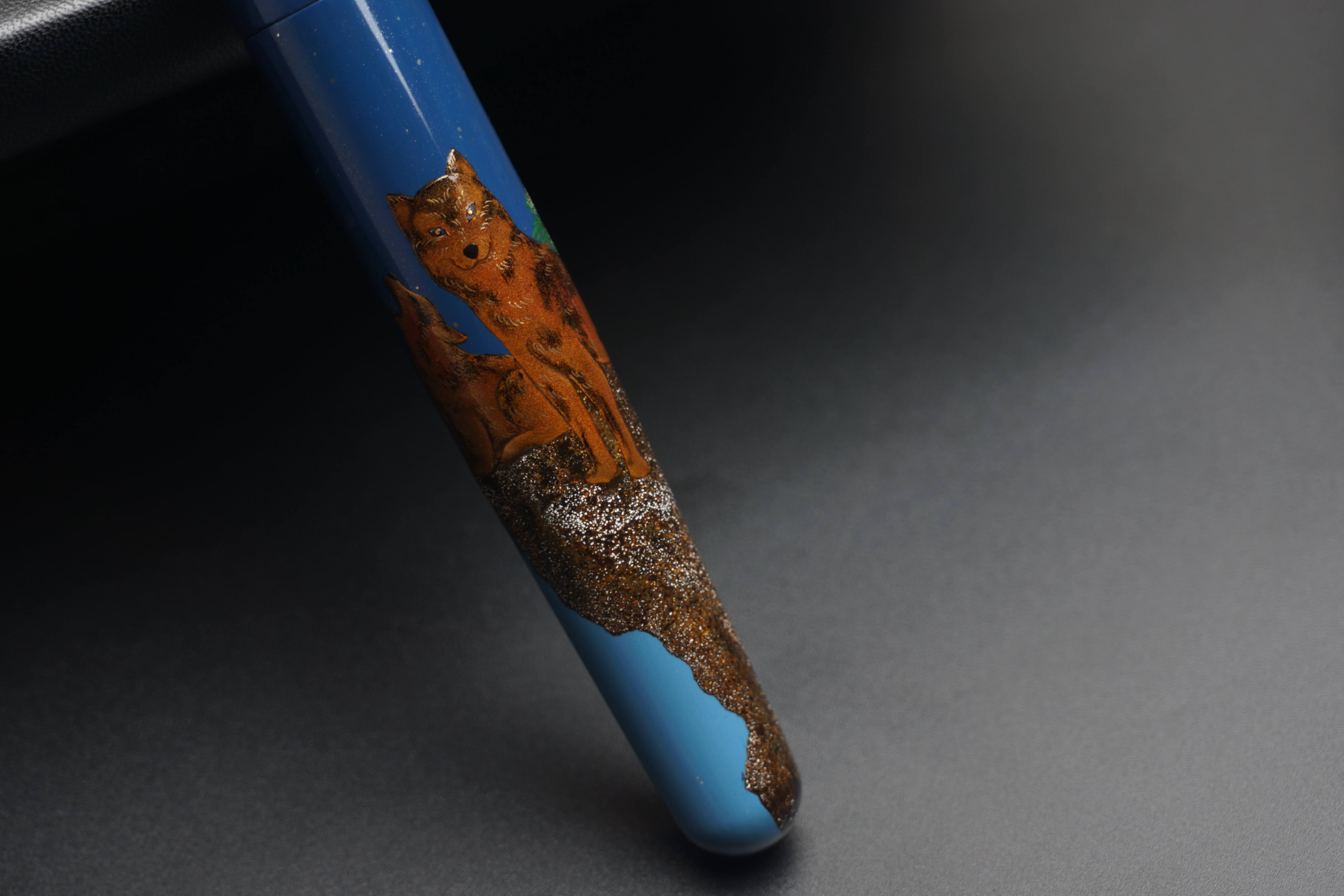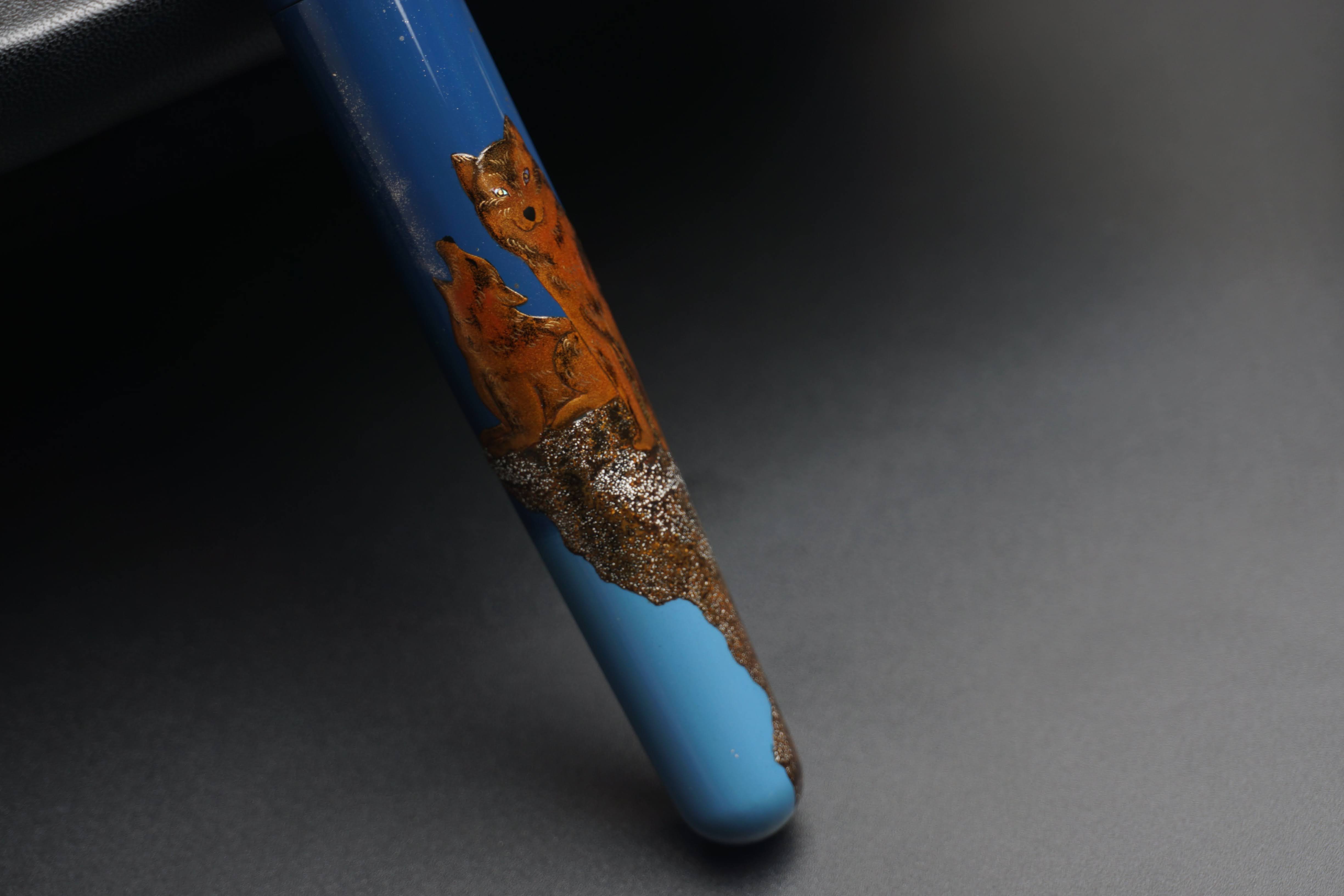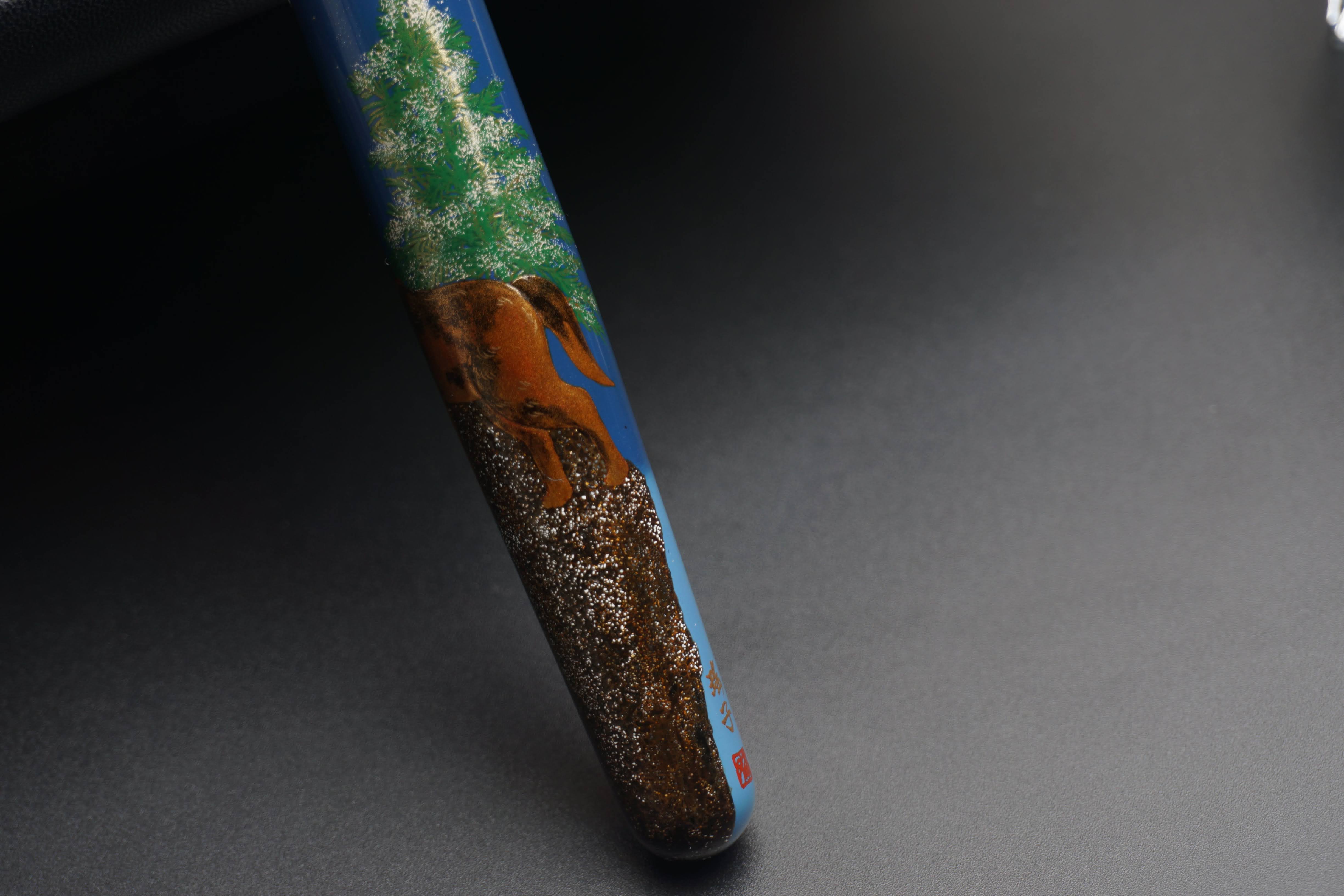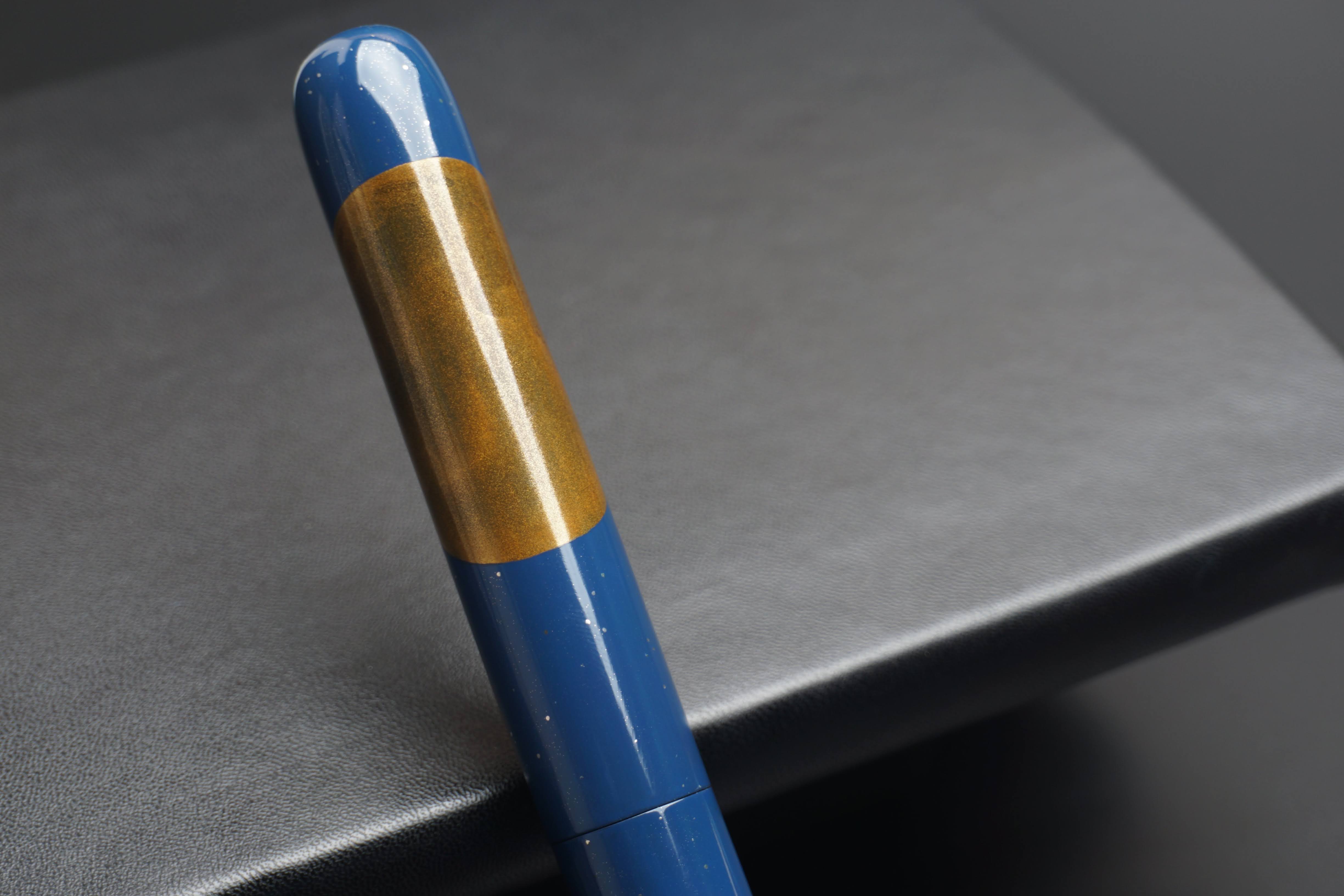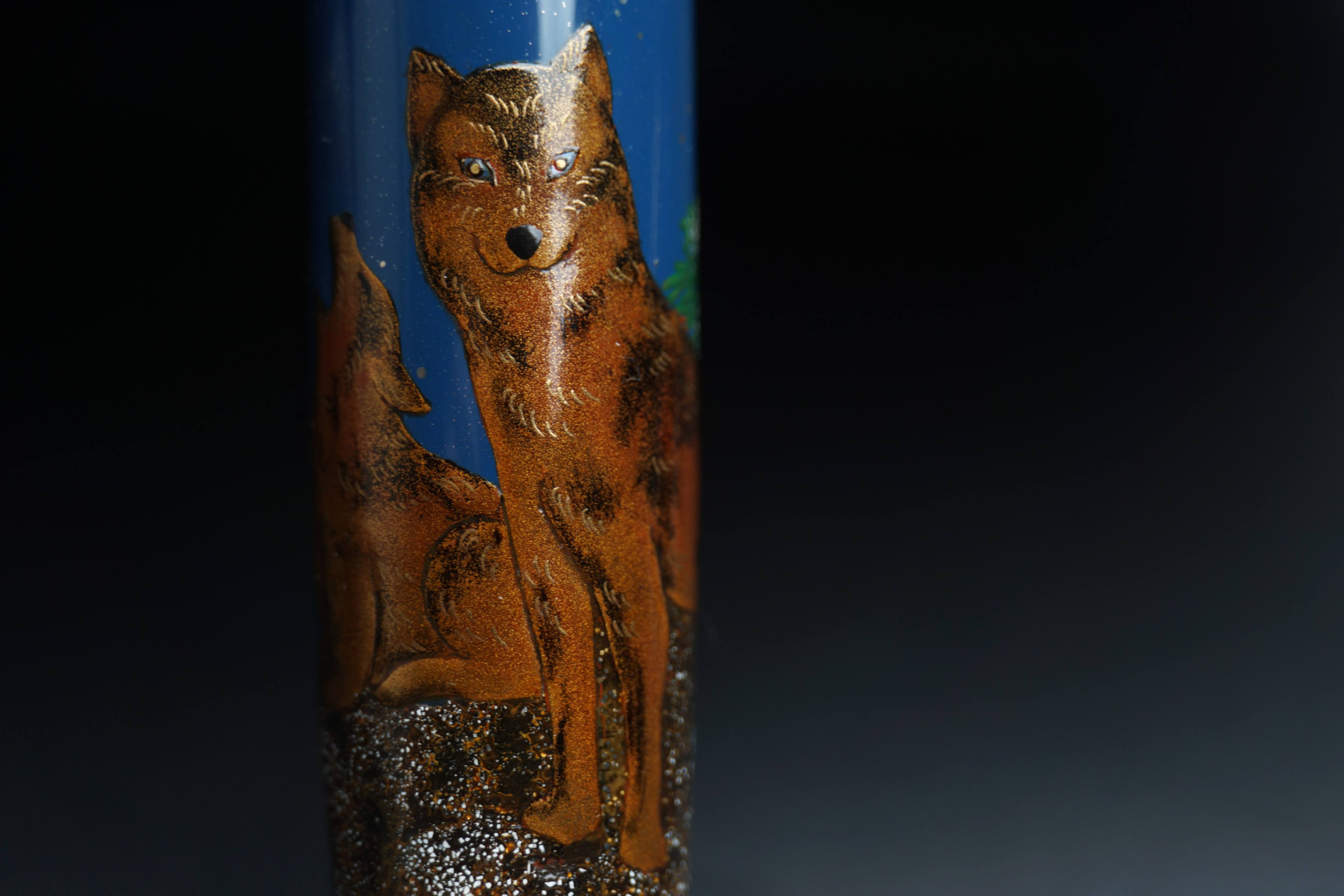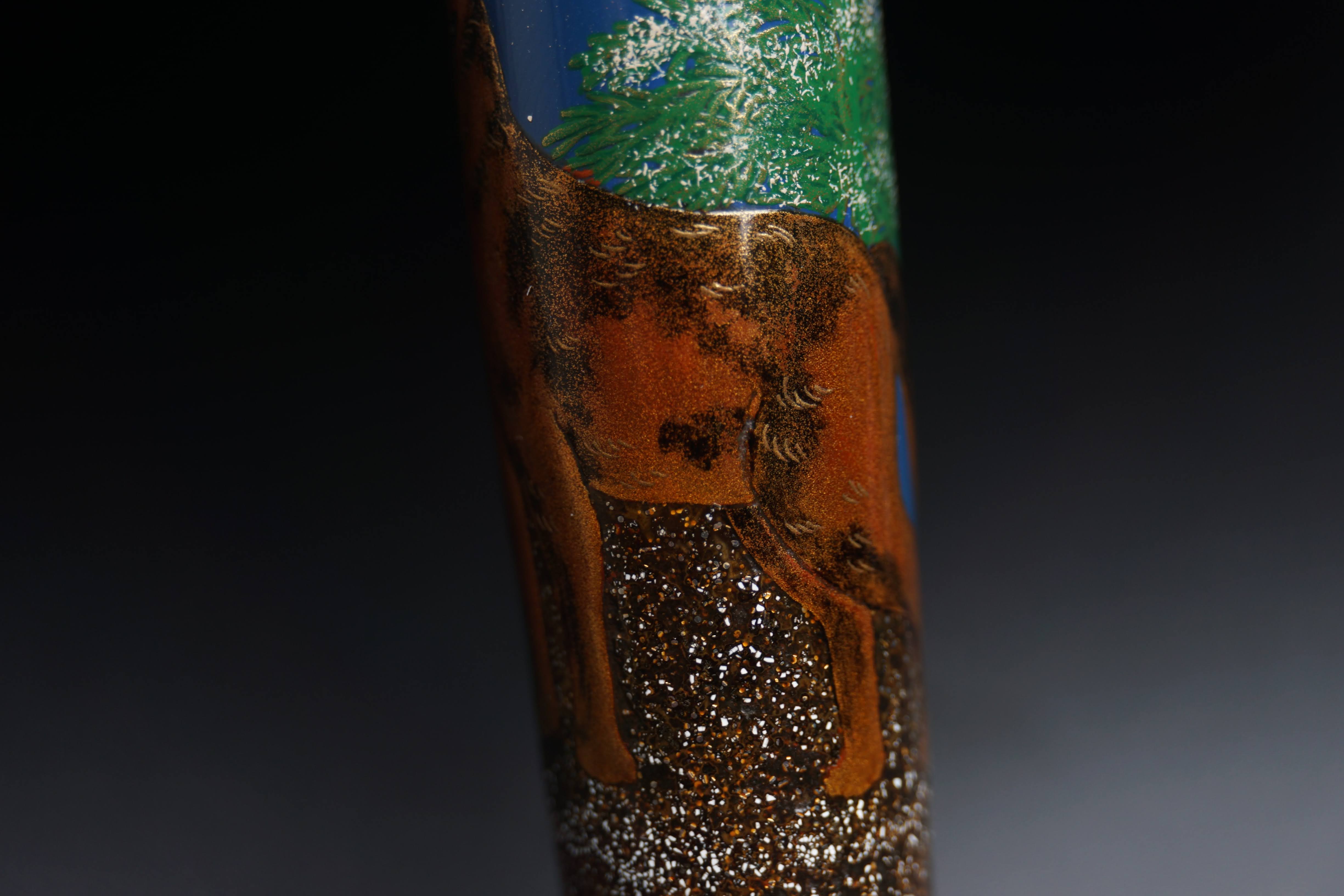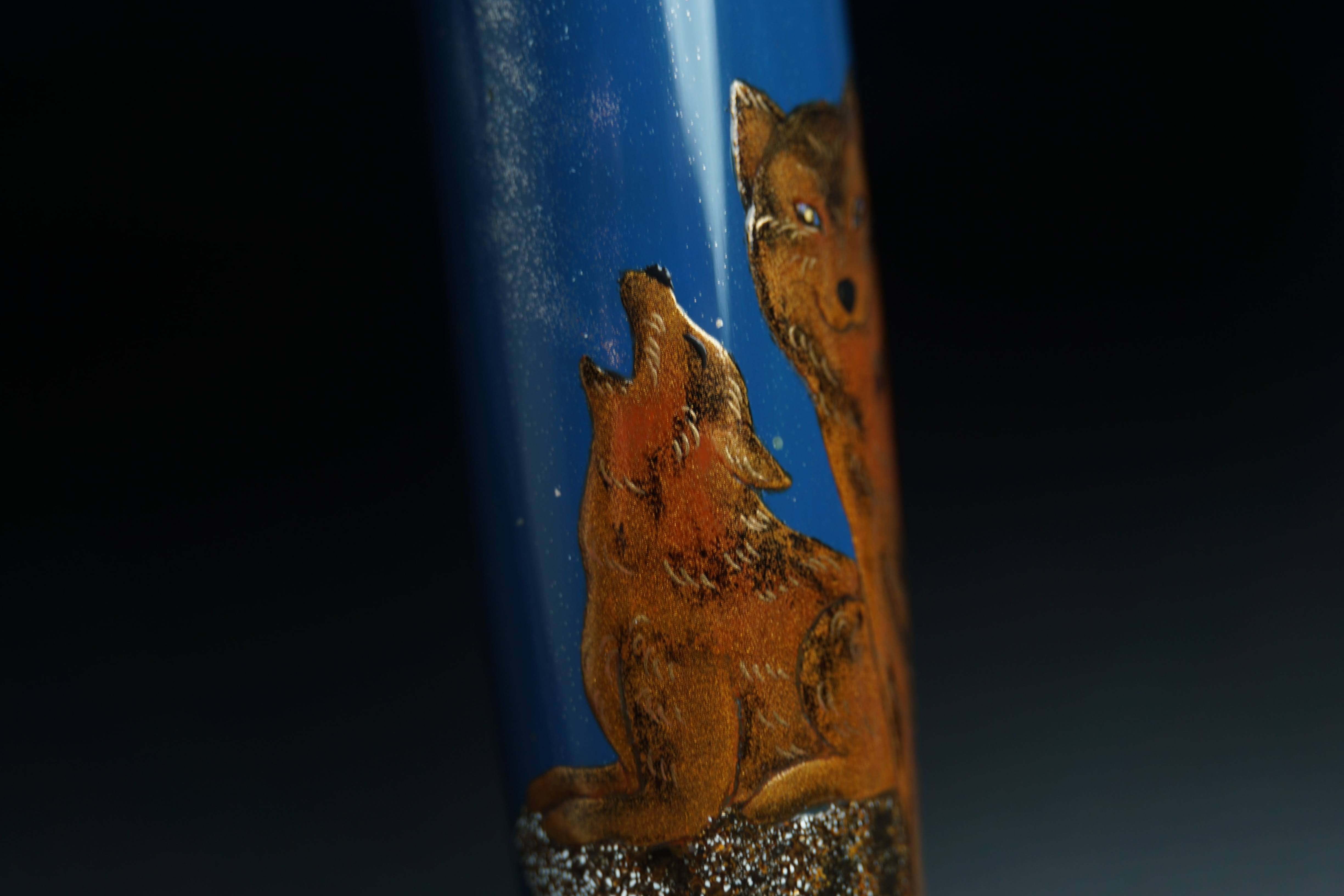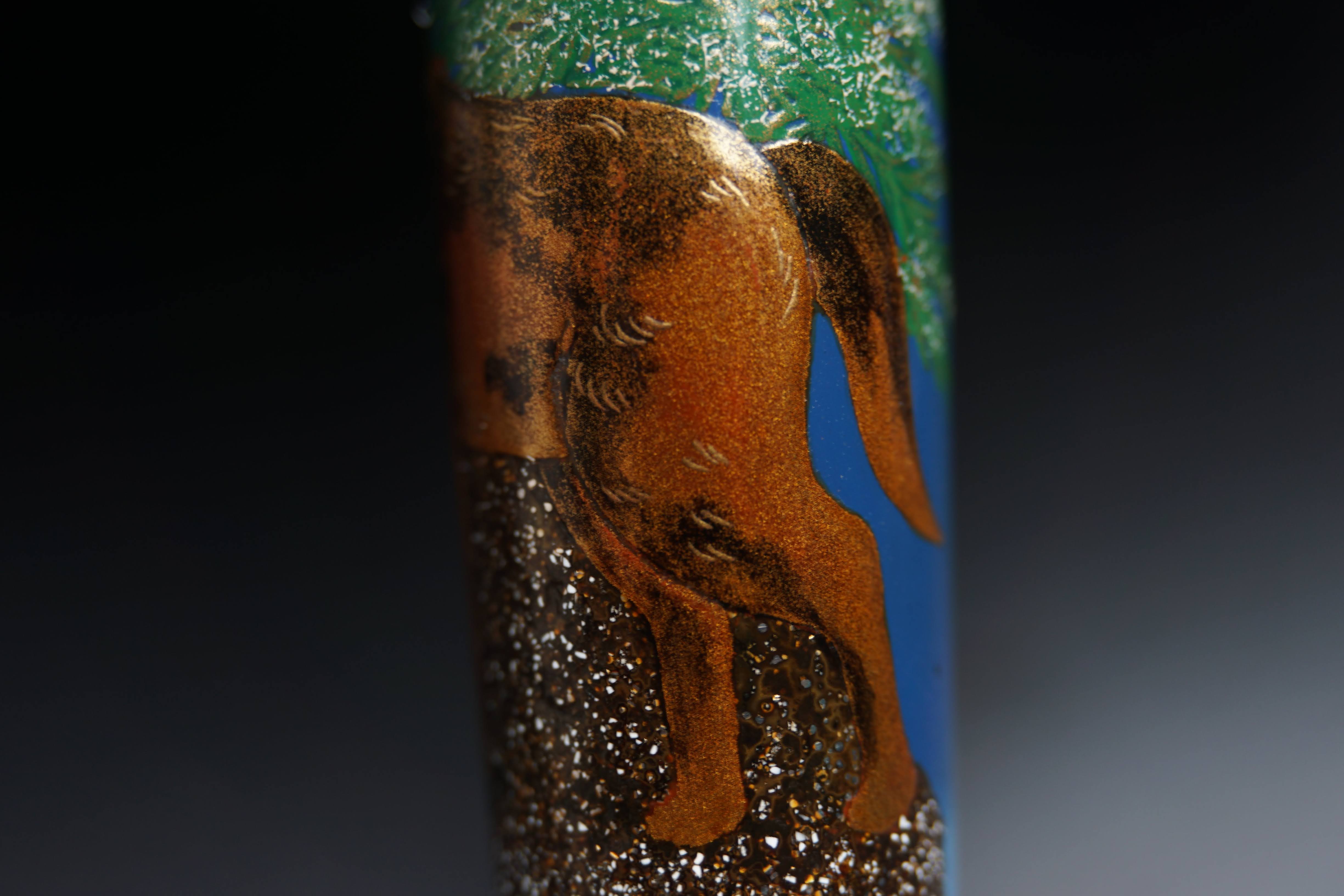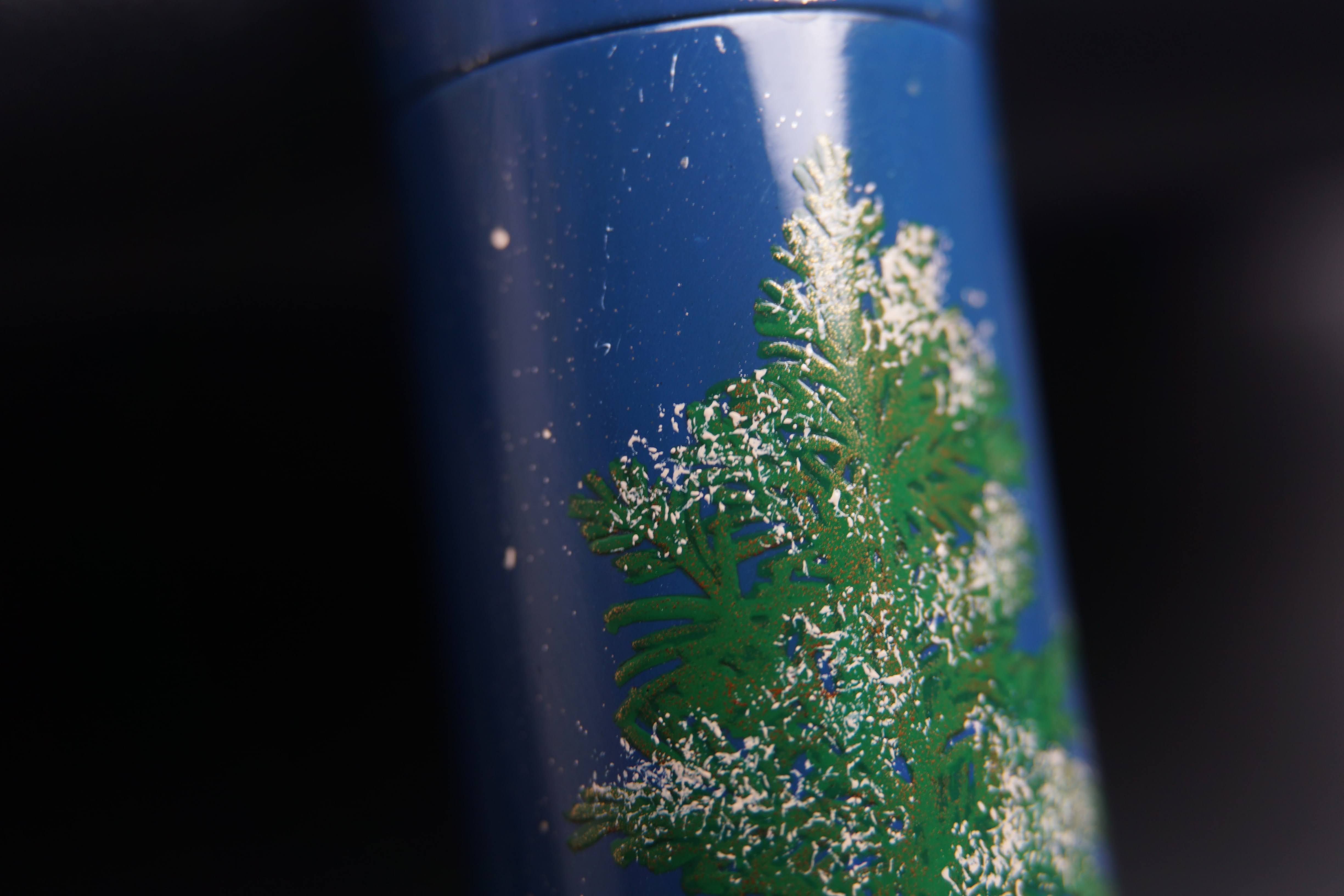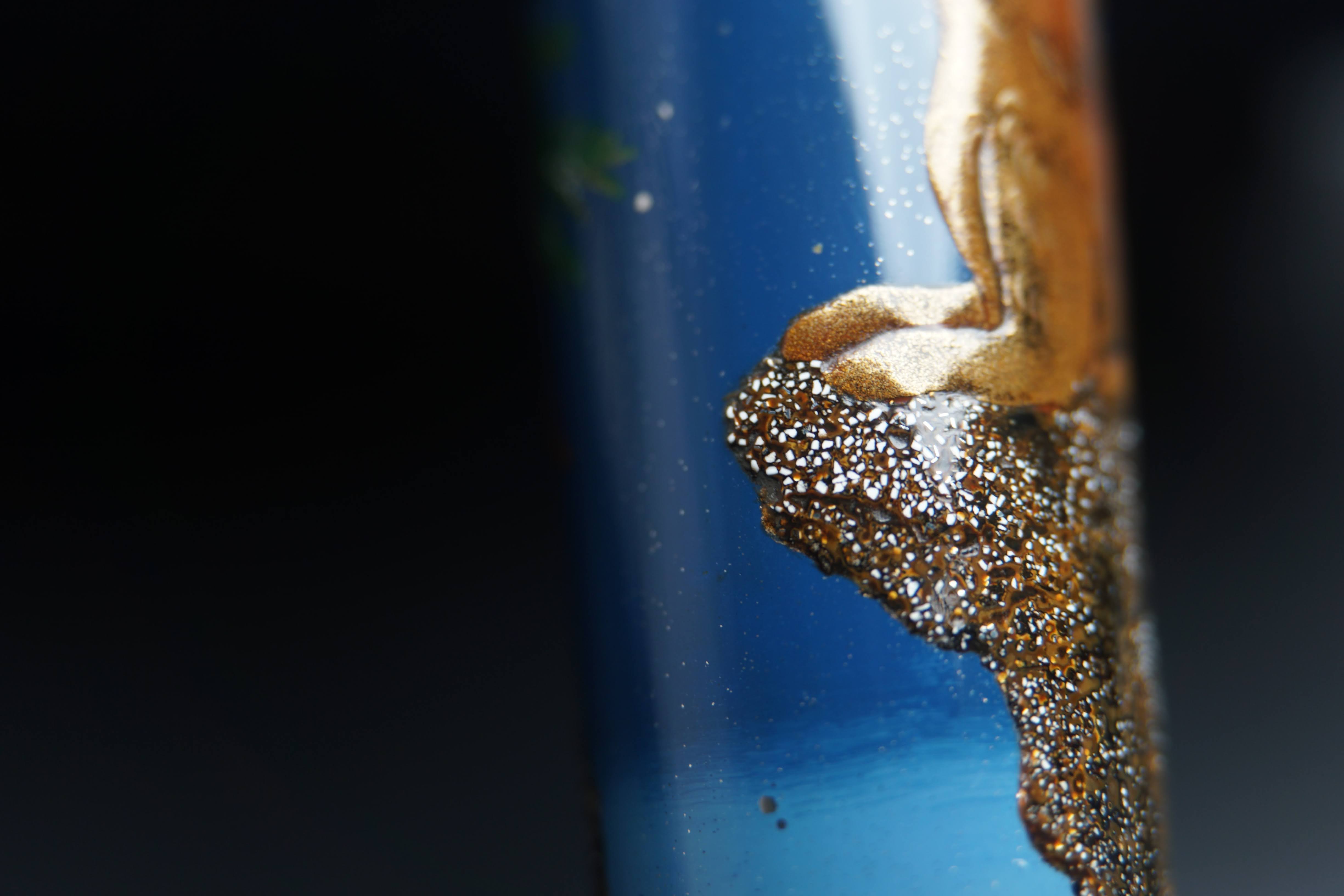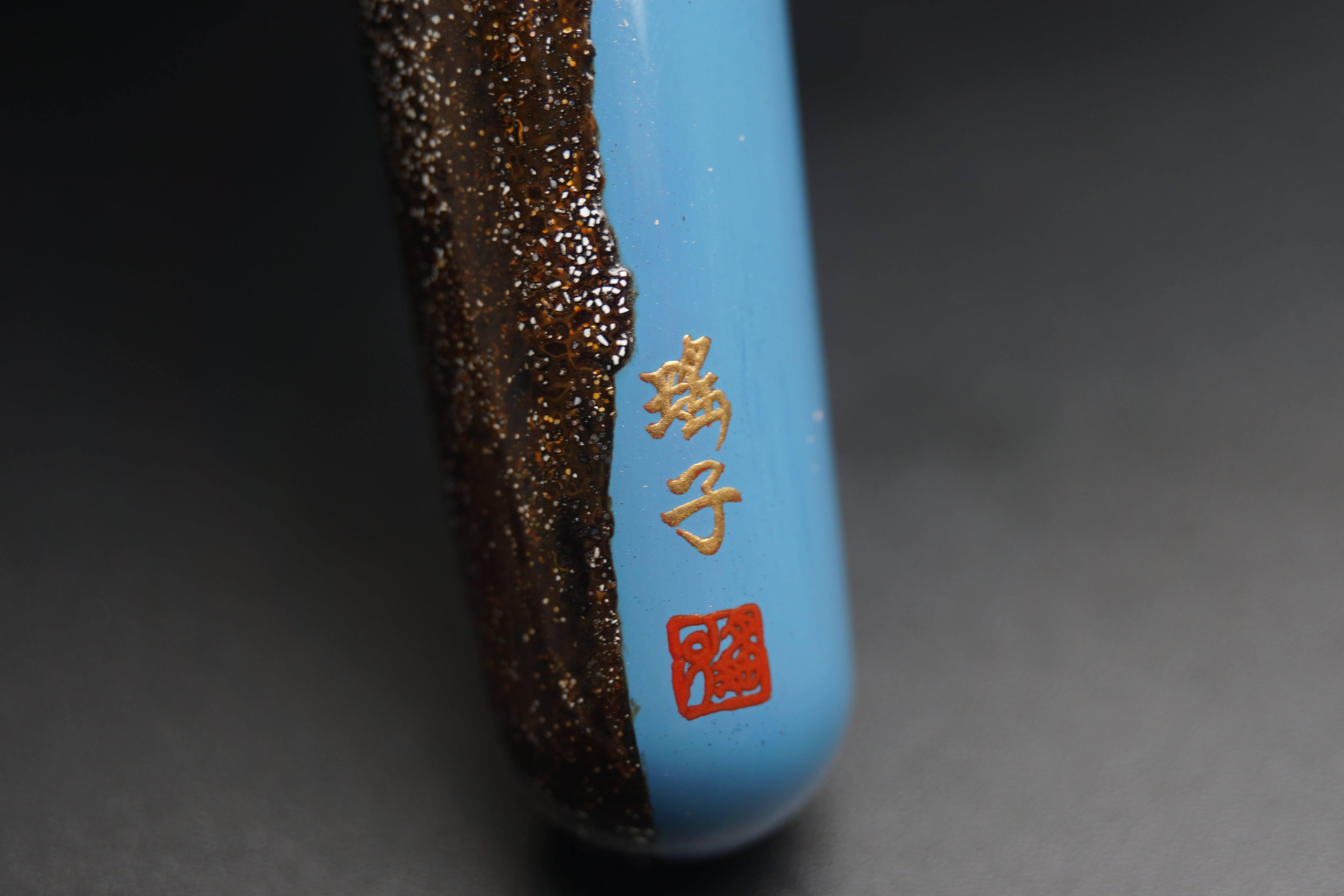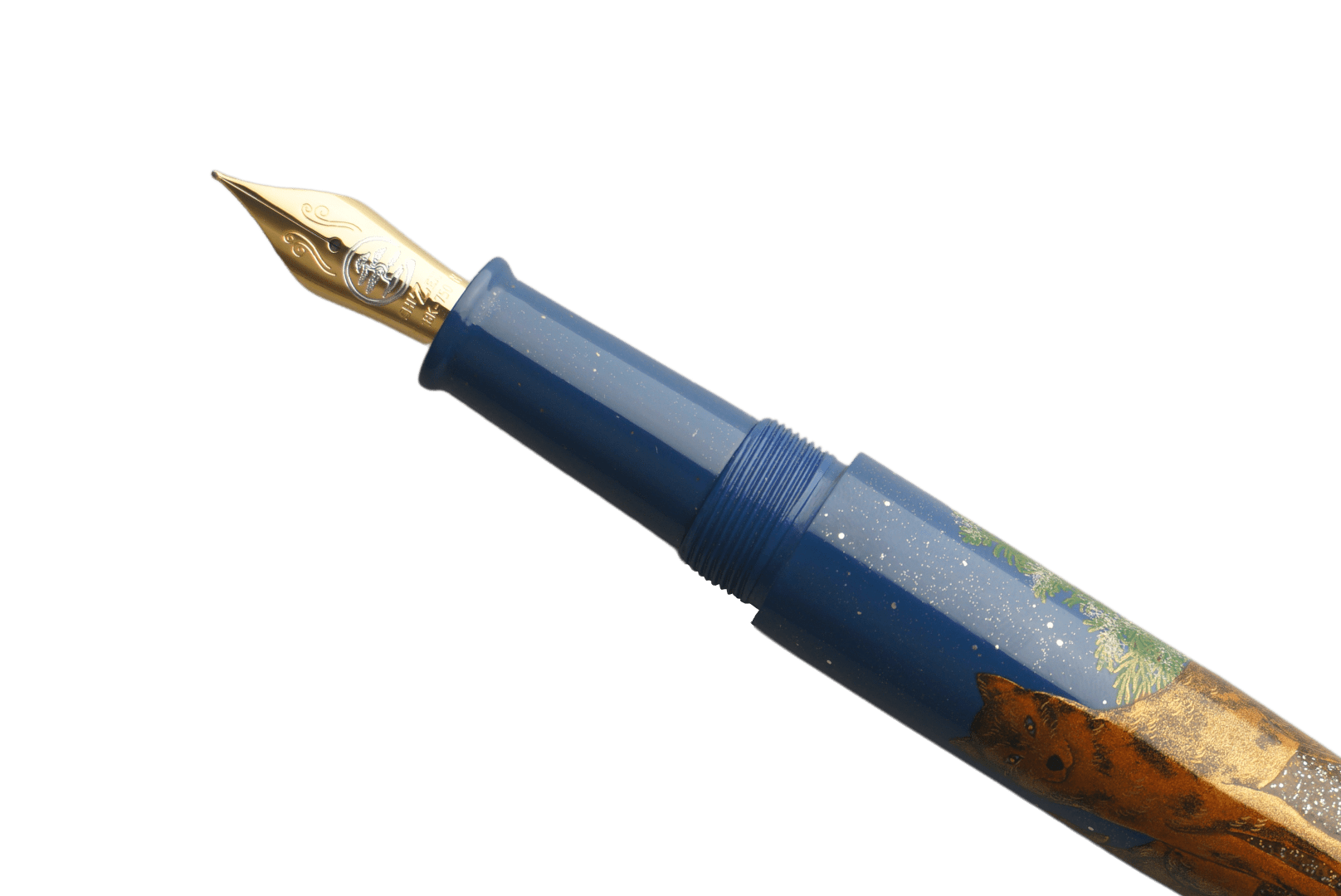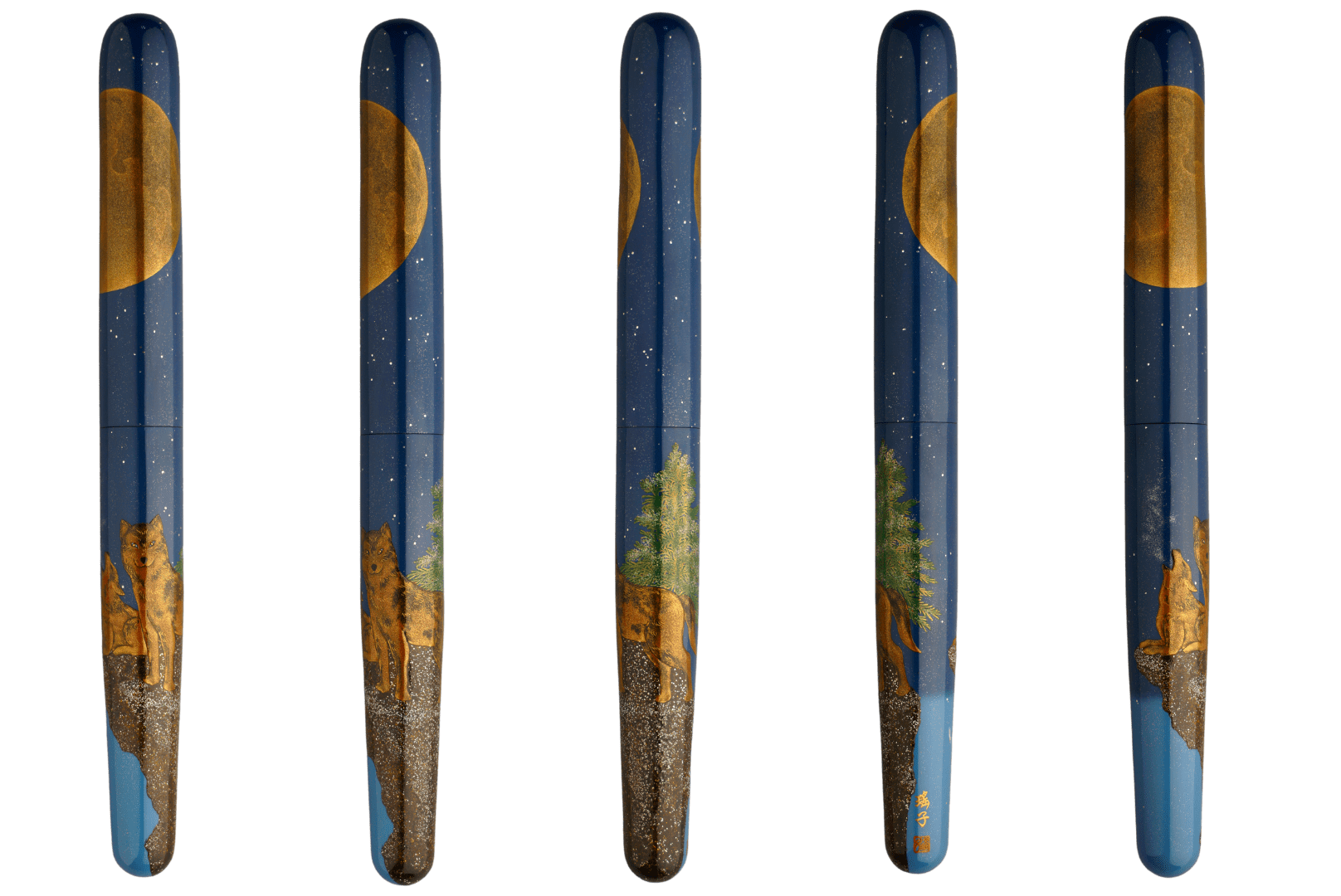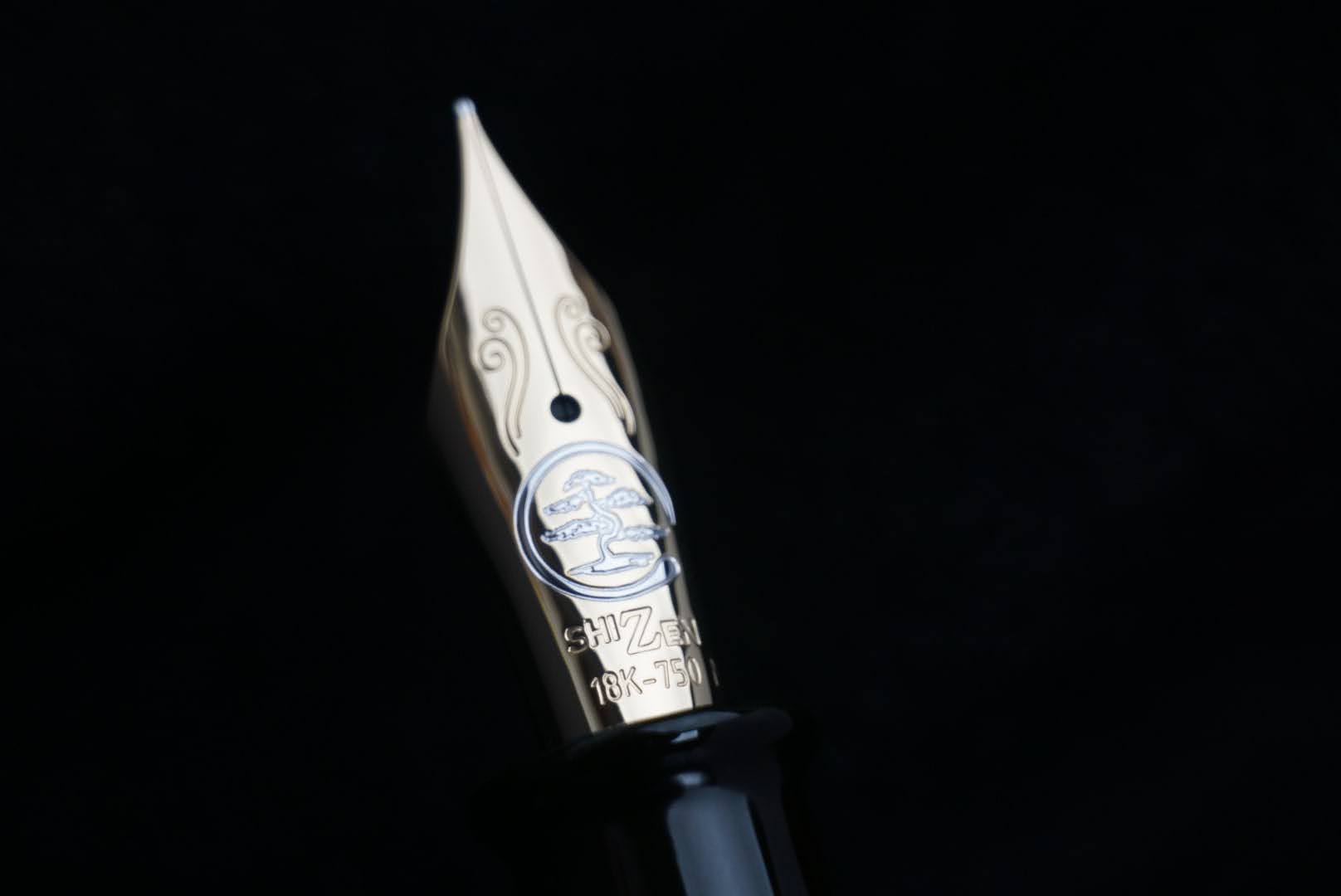ShiZen Two Japanese Wolves on Ranga M5 Fountain Pen
Starting at $975/mo for 6 month no-interest installments, 10% down using 
Learn about our Payment Relief Plan. |
|---|
✓ 100% Genuine Urushi
✓ Contains the Maki-E Red Seal (Highest Quality of Maki-E Art)
✓ Hand-painted by highly-trained Japanese Artisans
Wolves have long held deep roots in Japanese folklore and have been considered a sacred creature that protects the mountains. Okami is Japanese for wolf which directly translates to "great god". Centuries ago, Japanese wolves in particular served a role of controlling the herbivore population in the ecosystem. With the spread of rabies and disease, the Japanese wolves were wiped out to distinction in the early 1900's.
Yoko-san executes a magnificent rendition of two Japanese wolves reigning over a cliff on a mountain. Being that the Japanese wolf has not existed for over 100 years, no photography exists of the Japanese wolf. Yoko-san exercised immense creativity and skill to delivering this piece of the Japanese wolves re-imagined. A project that took 10 months and wasn't tackled without facing challenges; Yoko-san overcomes the hurdles with tenacity, patience, and her wide breadth of maki-e experience, enabling her to execute such stunning work.
In this cool snowy winter night, there is a full moon with light feathery snow coming down from the dark blue sky onto the cliff, pine tree, and the lake underneath. The depicted Japanese wolves are undoubtedly infused with feeling -- one can sense their peace and dominance as an apex predator of the mountains. Yoko-san once again leaves it to the beholder's imagination of the relationship between the two wolves. Wolves are in their nature loyal and are highly devoted to their family. The wolves can be seen as lifelong partners, siblings, or friends.
The wolves are produced with taka-makie (raised design) using various gold powders including Oki-hirame. The eyes of the wolf with the fixed gaze are made up of mother-of-pearl. Even the detail of condensation from the breath of the howling wolf is captured using silver powder and white urushi. They are firmly planted on the mountainous surface which is also produced using taka-makie using dark brown translucent and black urushi and incorporates various sizes of eggshells and silver powders. To create depth, the pine trees are lacquered using hira-makie with green urushi and gold maki-e powders, the snow on the leaves are made up of white urushi. The moon is produced using jimaki togidashi (flat-finish without steps) technique which expresses the moon pattern by changing the way the gold powder is sown.
About Ranga M5 Pen Body and Filling System:
This pen was produced in partnership with Ranga Pens. Urushi lacquer is applied over a solidly constructed handmade Ranga model 5 ebonite pen body, including the threads.
Pen comes with an international pen converter but pen barrel chamber can also be filled eye dropper style (eye dropper does not come with pen).
Nib Details:

This pen is furnished with a ShiZen 18k Gold, two-toned #6 nib, medium tip (currently ShiZen only offers one size: Medium)
The logo depicts an enso circle around a bonsai tree. Both of these illustrations have connections to Zen Buddhism. Enso circle represents a tranquil meditative state where one's mind is able to be emptied so that they can exercise immense creativity. Bonsai trees are commonly grown in Japan as they are perceived as living things that require discipline to care for them -- they also serve as harmony between nature and human-beings.
Technical Specification:
| Cap Length | 84 mm (3.31") |
| Cap Diameter | 17 mm (0.67") |
| Section Diameter | 12.5 mm (0.49") |
| Barrel Length | 126 mm (4.96") |
| Barrel Diameter | 17 mm (0.67") |
| Pen Length (Closed) | 177.8 mm (7") |
| Pen Length (Posted) | Do not post cap |
| Weight | 39 g (1.38 oz) |
| Weight (w/ink) | 40 g (1.41 oz) |
| Filling System | Cartridge/Converter/Eyedropper |
About the Artisan:

Maki-e artisan Yoko Sakata lacquered this pen. Born in 1985 in Miyagi prefecture, Yoko had an innate appreciation of Japanese traditional culture and enjoyed folk songs and tea ceremony. She knew from a young age she wanted to do something that would revolve around Japanese traditional culture which led her to pursue maki-e. She moved to Kyoto and studied at a vocational school followed by graduate school. Subsequently she became a disciple of Yutaro Shimode, a graduate school professor and one of Japan's leading maki-e artisans who was known for restoring maki-e at a very prestigious shrine Ise Jingu and made lacquered products for the emperor and his wife as well as state guests. She worked at Yutaro's lacquer workshop for 9 years. She also has taught maki-e at a vocational school in Kyoto and continues to holds workshops on lacquering maki-e and raden every year. She has lacquered various objects such as tea ceremony utensils, sword scabbards, and Buddha decorations (which she enjoys very much). She has won exhibitions sponsored by Japan Kogei Association, the largest tradiation craft organization in Japan backed by the Imperial Household Agency as well as the Japanese Traditional Crafts (Wester Region) Exhibition). In addition, she has won an award almost every year in the Kyoto Craftsman Competition for the making of Buddhist altars.

